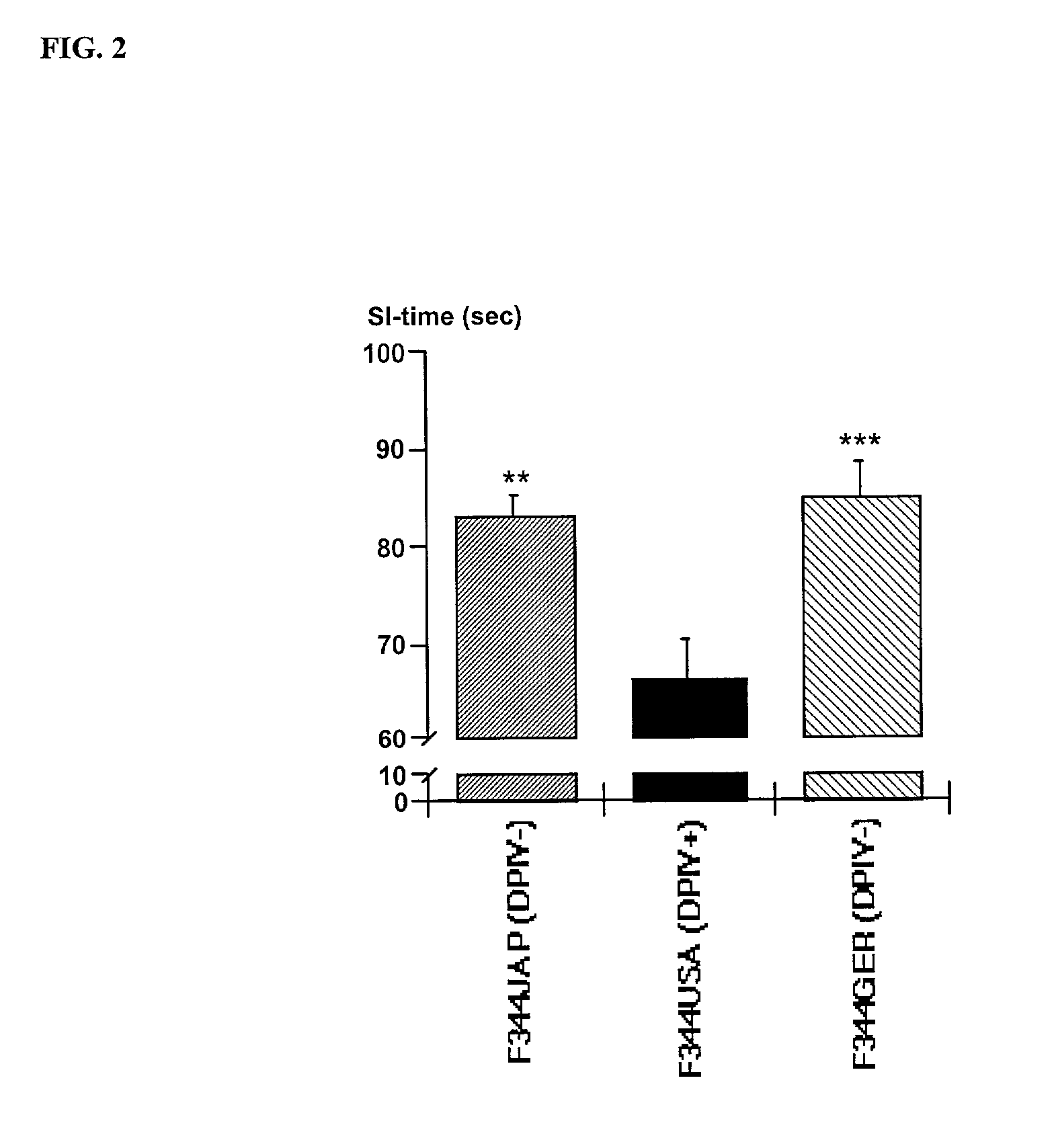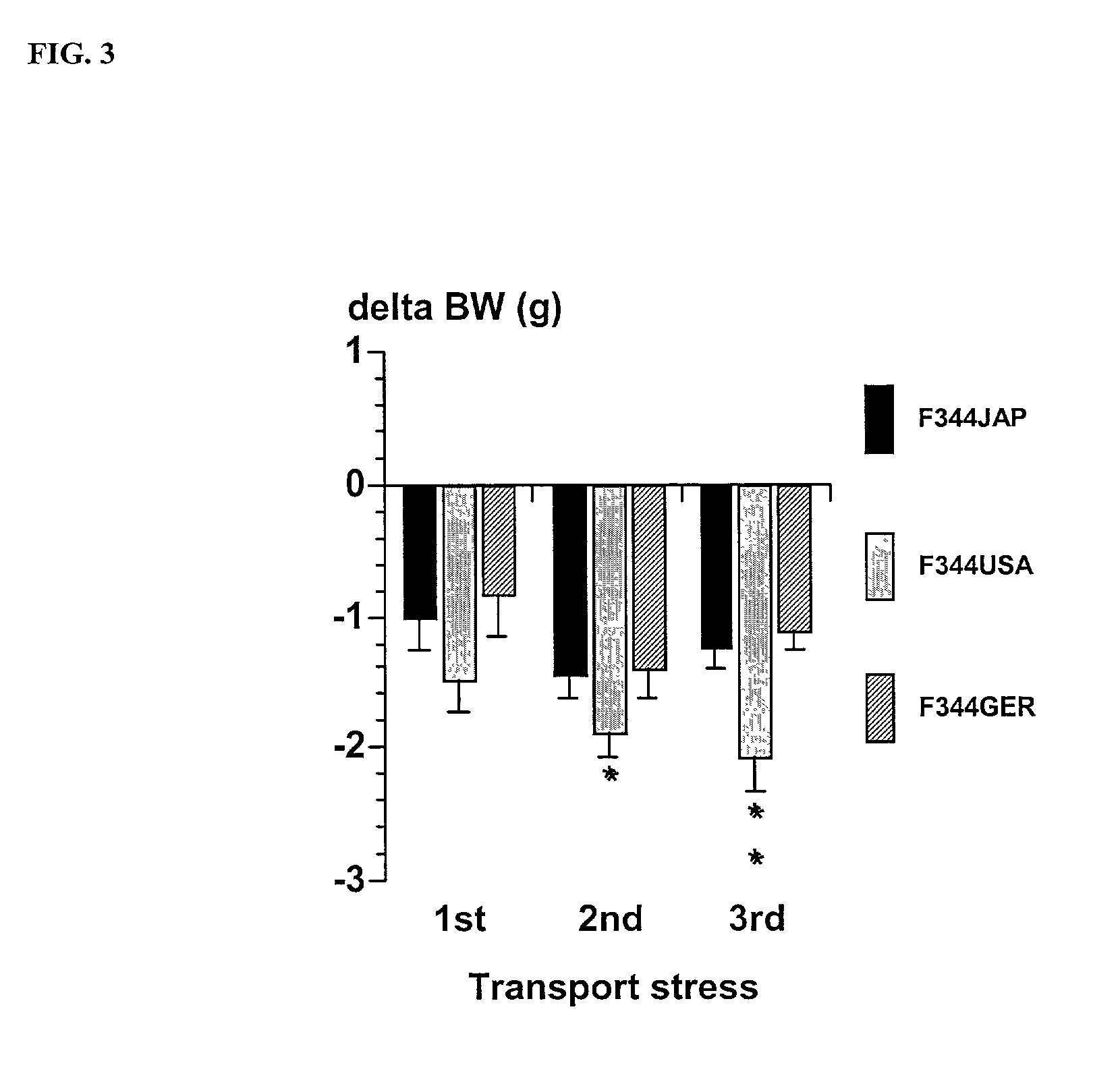Modulation of central nervous system (CNS) dipeptidyl peptidase IV (DPIV) -like activity for the treatment of neurological and neuropsychological disorders
a central nervous system and activity-like technology, applied in the direction of peptide sources, antibody medical ingredients, metabolic disorders, etc., can solve the problems of no pharmacological approach, disturbance of sleep, evoke a reduced functional response, etc., to delay the degradation of npy, reduce dpiv-like enzymatic activity, and improve neuronal and psychophysiological effects
- Summary
- Abstract
- Description
- Claims
- Application Information
AI Technical Summary
Benefits of technology
Problems solved by technology
Method used
Image
Examples
example 1
[0070]Spontaneous mutations of the DPIV gene observed in substrains of Fischer (F344) rats provide a model for studying the role of DPIV in behavioral regulation and adaptation to stress. The mutations in F344 rats result in a lack of DPIV-like enzymatic activity and are found in substrains from Germany (GER) and Japan (JAP) (Thompson et al., 1991; Tsuji et al., 1992) while rats from US (USA) and Hannover (HAN) breeders show significant enzyme activity. In F344JAP rats, a G633R substitution in the CD26 protein causes a greatly reduced expression of a mutant inactive enzyme (Tsuji et al., 1992; Cheng et al., 1999) while the other DPIV negative F344GER substrain expresses a non-active mutant enzyme (Thompson et al., 1991). The F344JAP rat is therefore be considered as an “protein knock-out” model (Cheng et al., 1999) while the F344GER substrain may represent a “protein over-expression” model (Shingu, Helfritz, Meyer, Schmidt, Mentlein, von Hörsten, submitted). On the basis of these fi...
example 2
[0080]In the previous example we have demonstrated that anxiety and stress-responsiveness were reduced in a genetic model of DPIV deficiency. In the present example, we report that central administration (i.c.v.) of the DPIV selective inhibitor P32 / 98 leads to anxiolytic-like effects in a well-established test of anxiety in rodents, the elevated plus maze test. We further report that also the emotionality of rats in response to novelty as measured by the open field paradigm (Denenberg et al., 1968) is less pronounced in P32 / 98 treated rats without affecting activity.
[0081]Animals. Male WistarF / Han (WF) rats (Central Animal Laboratory, Hannover Medical School, Hannover, Germany, weighing 350–390 g, were housed in a sound-proof, temperature controlled (24.0±0.5° C.) room under specific pathogen free conditions with a 12 / 12 h dark / light cycle (lights on at 07.00 with illumination level of 80 Lux). Food (Altromin lab chow pellets) and tap water were available ad libitum. Under ketamine / ...
example 3
[0089]In the previous examples we have demonstrated that anxiety and stress-responsiveness were reduced in a genetic model of DPIV deficiency. We further have shown that pharmacological inhibition of CNS DPIV systems results in dose-dependent anxiolytic-like effects in the plus maze and open field paradigms of experimental anxiety. In the present example, we report that central administration (i.c.v.) of the DPIV selective inhibitor P32 / 98 itself has also dose-dependent anxiolytic-like effects in the social interaction test of anxiety. We also report that the magnitude of anxiolysis by P32 / 98 is similar to that produced by NPY. In addition, we show that combined application of P32 / 98 and NPY has additive anxiolytic-like effects in the SI test. Finally, we show that 1 h and 12 h food intake is less affected by P32 / 98 treatment alone and in combinations.
[0090]Animals. Male WistarF / Han (WF) rats (Central Animal Laboratory, Hannover Medical School, Hannover, Germany, weighing 330–370 g,...
PUM
| Property | Measurement | Unit |
|---|---|---|
| size | aaaaa | aaaaa |
| size | aaaaa | aaaaa |
| size | aaaaa | aaaaa |
Abstract
Description
Claims
Application Information
 Login to View More
Login to View More - R&D
- Intellectual Property
- Life Sciences
- Materials
- Tech Scout
- Unparalleled Data Quality
- Higher Quality Content
- 60% Fewer Hallucinations
Browse by: Latest US Patents, China's latest patents, Technical Efficacy Thesaurus, Application Domain, Technology Topic, Popular Technical Reports.
© 2025 PatSnap. All rights reserved.Legal|Privacy policy|Modern Slavery Act Transparency Statement|Sitemap|About US| Contact US: help@patsnap.com



